Over the past few weeks, our contractor, Gregg, has finished the bulk of the repair work on the stairs. He’s almost ready to begin reinstalling the original newel post and handrail. But all of this progress has reminded me just how much work I have left to do in the stairwell. Once Gregg is done, I’ll still need to stain and seal the treads, add a new coat of varnish to the handrail and newel post, paint the balusters, risers, and the exposed edge of the staircase, skim coat and paint the walls, and lots of other stuff I haven’t thought of yet.
But before I can start most of that work, Gregg needs to put the stairs back together. After a break for the Fourth of July, Gregg finished installing the last of the replacement treads. The entire two flights of stairs are now straight and level, and walking upstairs no longer feels like quite the adventure it once did. Gregg used flooring adhesive to secure the treads, so they don’t even creak. Here’s a look at the complete, second flight of stair treads.
At the top of the second flight, Gregg added a little curved piece of wood to the front of the landing to match the curve of the last riser.
This little detail had been lost at some point when the flooring was replaced on the landing.
With all of the treads replaced, Gregg moved on to installing the end pieces on all of the new treads. Traditionally, in a staircase like ours where one side of the stairs is open, the treads are constructed in two pieces – the main body of the tread and a little end piece called the return, which typically runs an inch or two beyond the end of the tread, giving the appearance that the tread is set into the riser. The return is joined to the rest of the tread with a 45-degree miter joint. I don’t know why treads are constructed this way. In many cases it would be just as easy, maybe easier, for a carpenter to cut the entire tread, return and all, from a single piece of wood. But I guess this two-piece construction is the way it has always been done, and now it’s considered a sign of good craftsmanship. So that’s the way Gregg decided to make the treads.
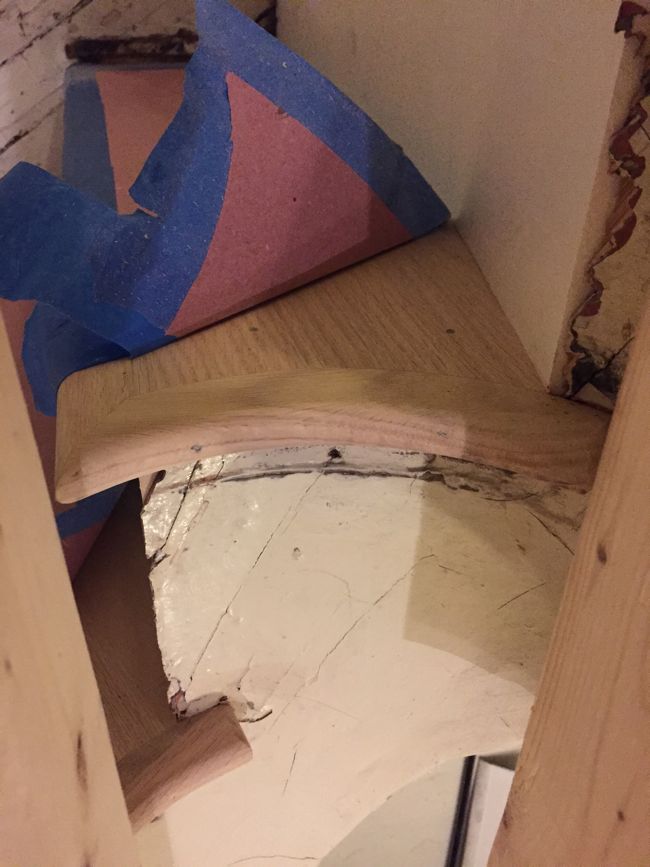 Of course, making the returns was complicated by the fact that the inner edge of many of the treads is curved. Gregg used a jig saw to custom cut each of these curved returns and added the outer bull-nosed edge with a router. He shaved and sanded each return until it fit perfectly. The results are impressive, more impressive even than the old stairs, since without any paint obscuring it, you can see the tight joint between the tread and the return. Here’s an overhead shot of a few of the curved treads.
Of course, making the returns was complicated by the fact that the inner edge of many of the treads is curved. Gregg used a jig saw to custom cut each of these curved returns and added the outer bull-nosed edge with a router. He shaved and sanded each return until it fit perfectly. The results are impressive, more impressive even than the old stairs, since without any paint obscuring it, you can see the tight joint between the tread and the return. Here’s an overhead shot of a few of the curved treads.
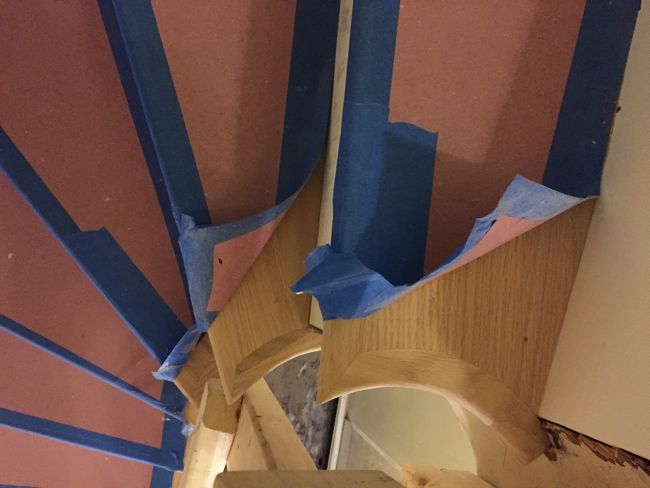 Gregg decided to add 3/4-inch cove moulding under each of the returns, since that’s what was originally there. But making curved cove moulding is even more challenging than making curved returns. The original moulding was carved from solid wood, but given our timeline and budget for this project, hand-carved moulding isn’t a practical option. Instead, Gregg ordered some flexible cove moulding, which showed up this past week. The flexible moulding is made out of what feels like dense rubber, and it arrived coiled up in a box. It’s a weird material, and it took Gregg some time to get used to working with it. But after he installed a piece on the first step, it looks pretty flawless. It’s supposed to be paintable, so it should blend right in with the rest of the moulding.
Gregg decided to add 3/4-inch cove moulding under each of the returns, since that’s what was originally there. But making curved cove moulding is even more challenging than making curved returns. The original moulding was carved from solid wood, but given our timeline and budget for this project, hand-carved moulding isn’t a practical option. Instead, Gregg ordered some flexible cove moulding, which showed up this past week. The flexible moulding is made out of what feels like dense rubber, and it arrived coiled up in a box. It’s a weird material, and it took Gregg some time to get used to working with it. But after he installed a piece on the first step, it looks pretty flawless. It’s supposed to be paintable, so it should blend right in with the rest of the moulding.
 While Gregg worked on the stairs, I finished cleaning the original handrail and newel post. I continued my strategy of wiping down each section of the handrail with a rag soaked in mineral spirits, and when I was done, I had removed a ton of brown-black gunk from the handrail (most of which was probably decades-old grease from peoples’ hands).
While Gregg worked on the stairs, I finished cleaning the original handrail and newel post. I continued my strategy of wiping down each section of the handrail with a rag soaked in mineral spirits, and when I was done, I had removed a ton of brown-black gunk from the handrail (most of which was probably decades-old grease from peoples’ hands).
Once the mineral spirits had completely evaporated, I could see that the underlying finish was really uneven. The finish had completely worn off on the parts of the handrail that people had grabbed the most over the years, particularly where the staircase turns, but the finish was intact in other places. You can kind of see what I’m talking about in this picture:
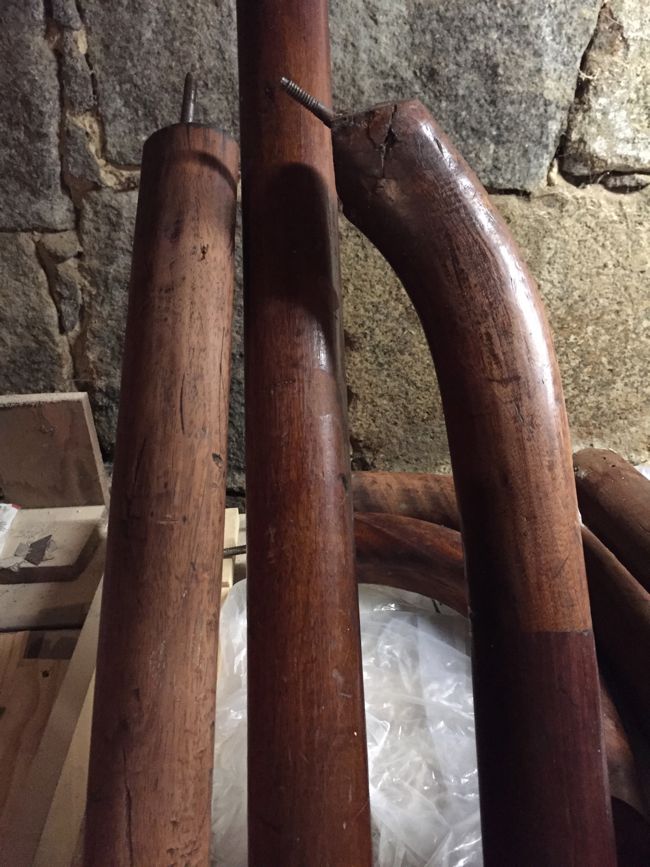 Once the handrail is reinstalled, I’ll probably add a new coat of polyurethane to the whole thing to even everything out.
Once the handrail is reinstalled, I’ll probably add a new coat of polyurethane to the whole thing to even everything out.
By the end of last week, Gregg had finished installing all of the moulding on the first flight of stairs.
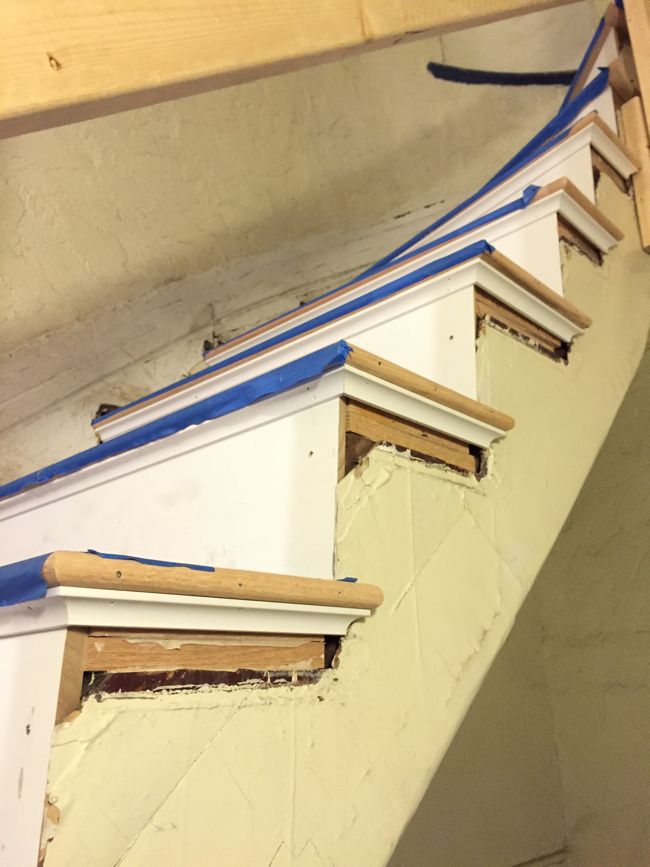 As you can see, there are still some big gaps that were created when the new treads were shimmed and leveled. But we (or I should say Gregg, it was completely his idea) have a plan to (hopefully) quickly and easily patch over these gaps, leaving everything smooth and seamless. But more on that next time.
As you can see, there are still some big gaps that were created when the new treads were shimmed and leveled. But we (or I should say Gregg, it was completely his idea) have a plan to (hopefully) quickly and easily patch over these gaps, leaving everything smooth and seamless. But more on that next time.
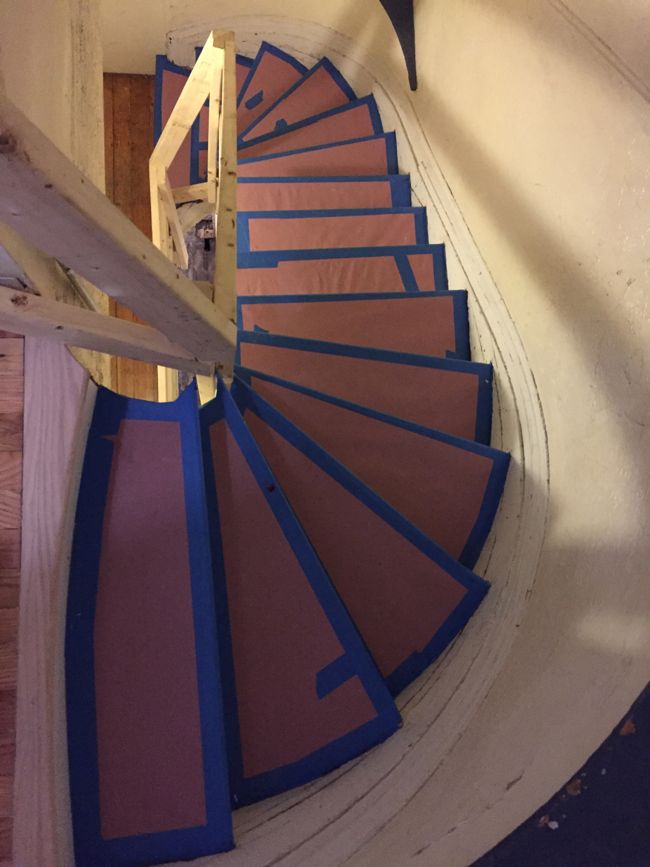

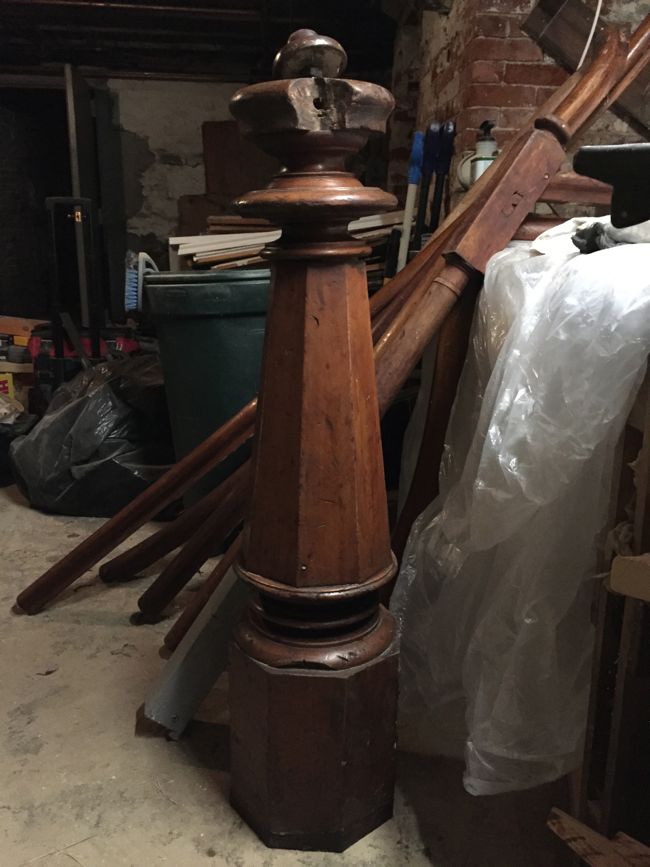
Who would ever dream of the skill and artistry needed to construct this stairway. That Gregg is a master. Impressive. And you’re not too bad yourself, tackling all that work.
Thanks! Gregg is doing an amazing job!
Refurbishing this stairwell is all about the details. It’s looking amazing, and that newel post is so impressive. I look forward to seeing the solution for covering the gaps.
Love these updates! The stairs are going to look amazing. Your neighbors must be excited about all the improvements!
We’re all excited to see how it turns out! It’s shaping up to be a big transformation.
Awesome perseverance! It’s a work of art.
Wow, please pass our compliments on to Gregg – those treads are AMAZING!
Will do. Aren’t they impressive?
[…] mentioned at the end of a post a few weeks ago that Gregg had a plan to quickly and easily fill in the gaps left behind when the stair treads were […]